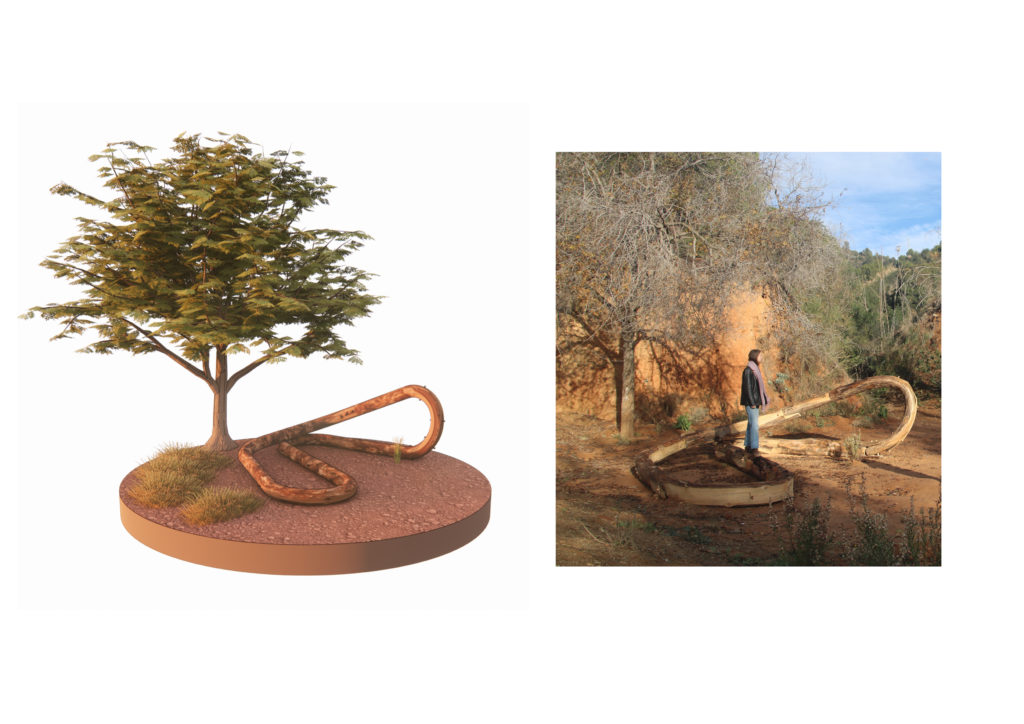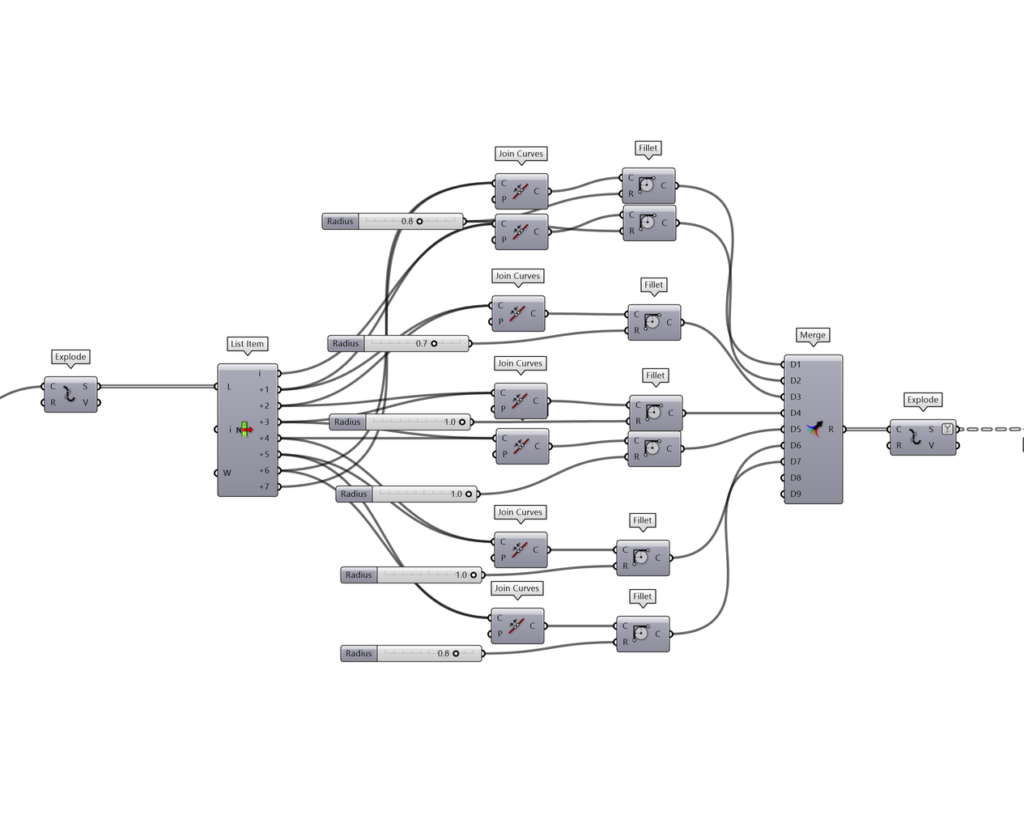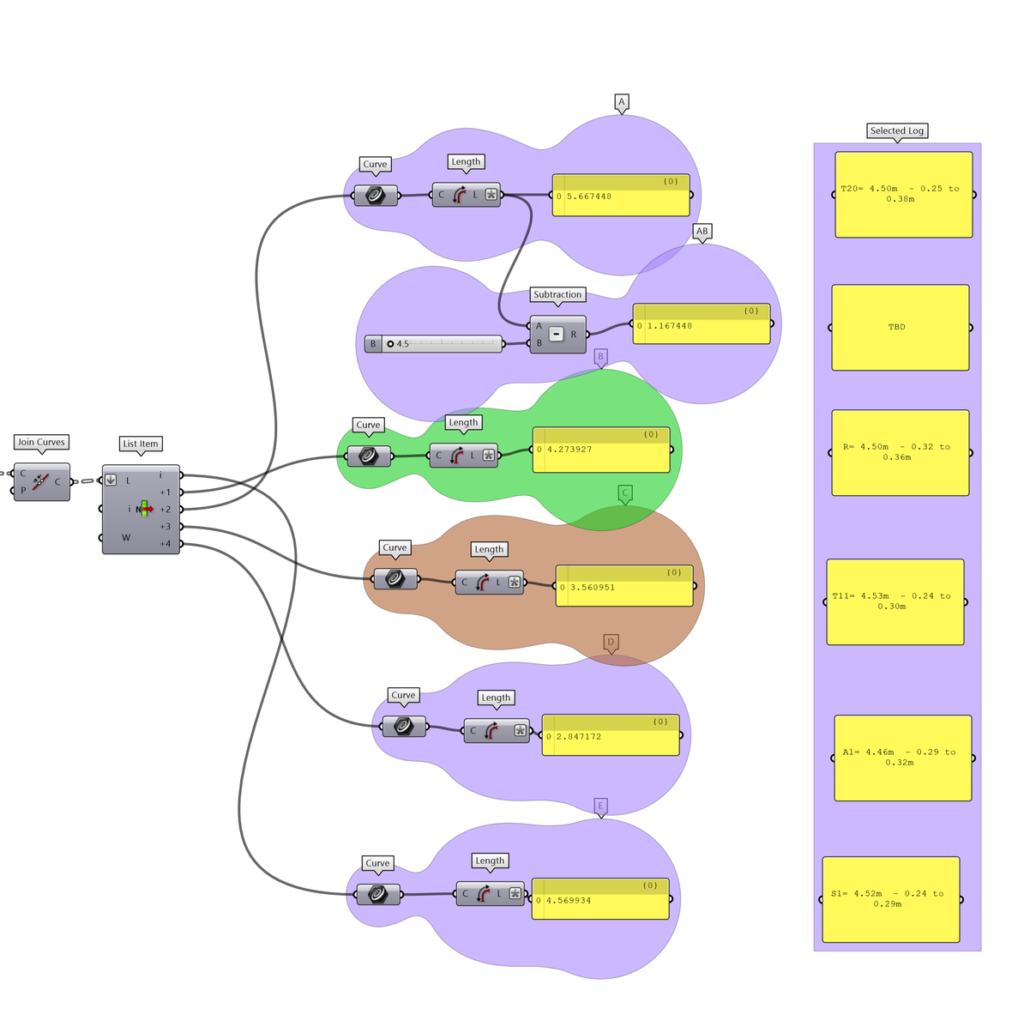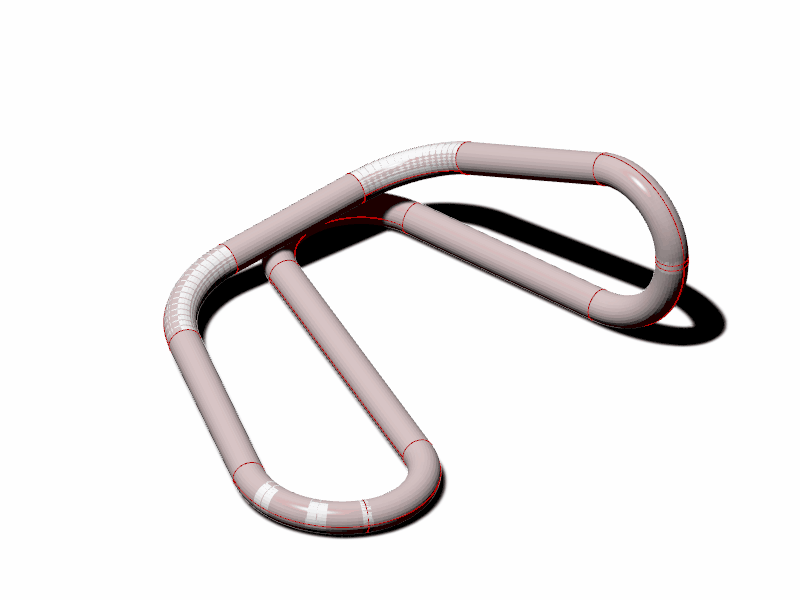
The project ‘[Wood]le’ – a ‘Wooden Noodle’ explores the idea of steam-bending tree logs to create a self stable structure. The Woodle assumes the function of a seating area as it rests on the ground at one end and folds up to become an element that frames the valley of Font Del Gos on the other.
The project was developed over a period of a month through iterative cycles of material prototyping and digital modeling & scripting to define and re-define workflow. The project’s salient feature is to connect the tree logs as an infinite loop which stabilizes and maintains the tension in the bends. The infinite loop consists of 6 members; 5 bent and 1 straight.

The Grasshopper script starts with a set of control points that can be moved in all 3 axes to define the geometry of the loop. Next, the infinite loop could be further altered by varying the radii of the bends within a range of 50-120 cm, which was informed by prior research on the limits of the bending process.



get the >end points of the arched segments and create straight >line(s) between the start points
and the >shifted list of end points (Bottom), cull unnesseccary lines and >weave the grafted list with the grafted arched segments


After bending the logs, they were 3D scanned with the Lidar scanner of an Ipad and compared to the projected bending radii in the digital model. This method helped to adjust the bends of the logs and thus to get as close to the desired design as possible.


